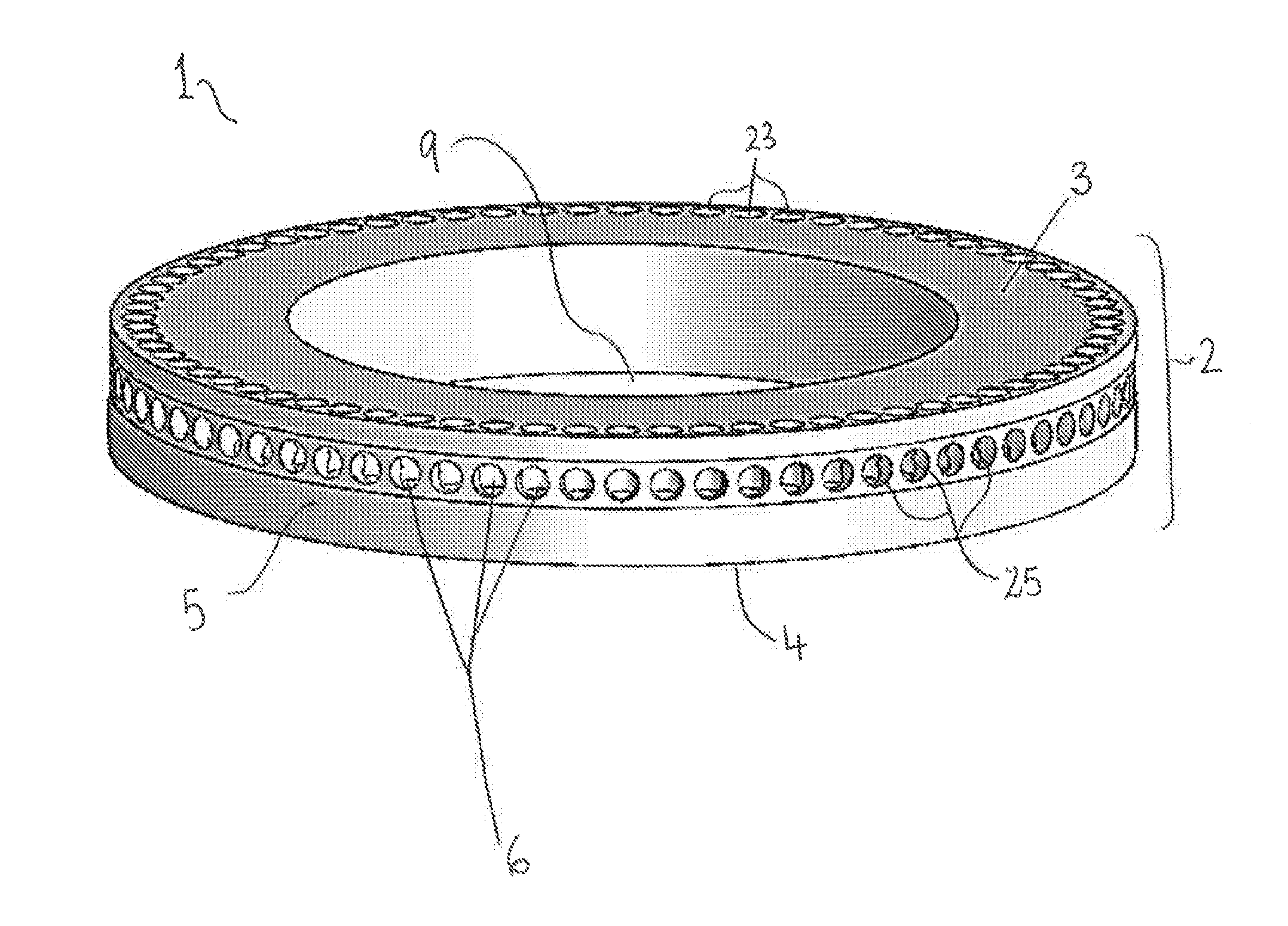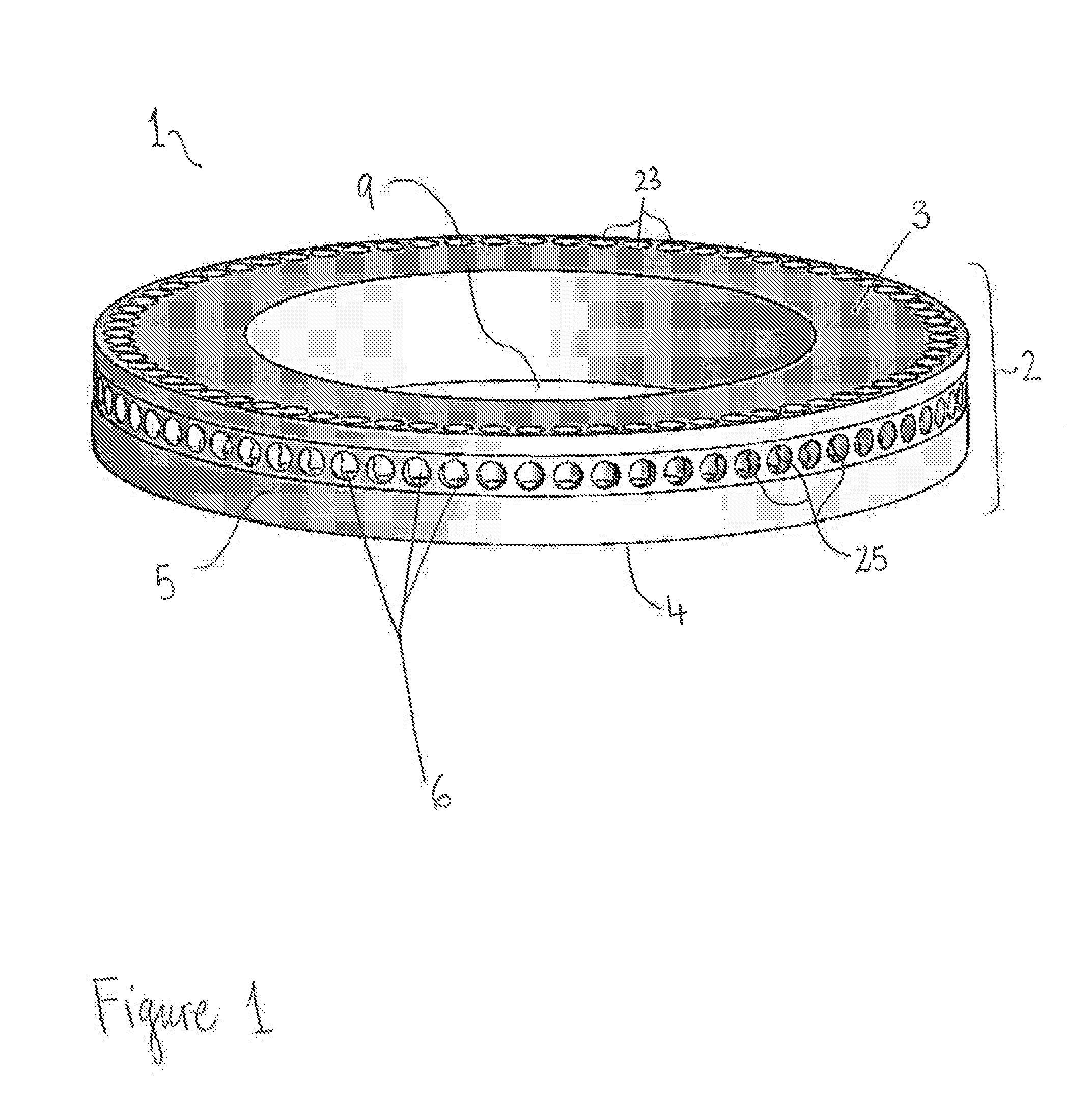Circular extractor
- Summary
- Abstract
- Description
- Claims
- Application Information
AI Technical Summary
Benefits of technology
Problems solved by technology
Method used
Image
Examples
Embodiment Construction
[0047]FIG. 1 illustrates an exemplary wellformer (1) of the invention, showing the cylindrical body (2) with its top (3), bottom (4) and circumferential (5) surfaces, and central opening (9). The plurality of chambers (6) cannot be seen in their entirety but are indicated as being within the openings on the circumferential surface (25). The openings on each of the surfaces are present at regular intervals all the way around the cylindrical body (2). In the diagram three of the openings on the top surface (23) and on the circumferential surface (25) are indicated. The openings on the bottom surface (4) are not visible in this diagram but would be positioned in direct underlying 264312-6 registry with said openings on said top surface (23), thereby defining in each case an open-ended cylindrical passageway from the top (3) surface to the bottom surface (4), which in addition includes another passageway to the circumferential surface (5) so that the chamber (6) is substantially T-shape...
PUM
 Login to View More
Login to View More Abstract
Description
Claims
Application Information
 Login to View More
Login to View More - R&D
- Intellectual Property
- Life Sciences
- Materials
- Tech Scout
- Unparalleled Data Quality
- Higher Quality Content
- 60% Fewer Hallucinations
Browse by: Latest US Patents, China's latest patents, Technical Efficacy Thesaurus, Application Domain, Technology Topic, Popular Technical Reports.
© 2025 PatSnap. All rights reserved.Legal|Privacy policy|Modern Slavery Act Transparency Statement|Sitemap|About US| Contact US: help@patsnap.com



